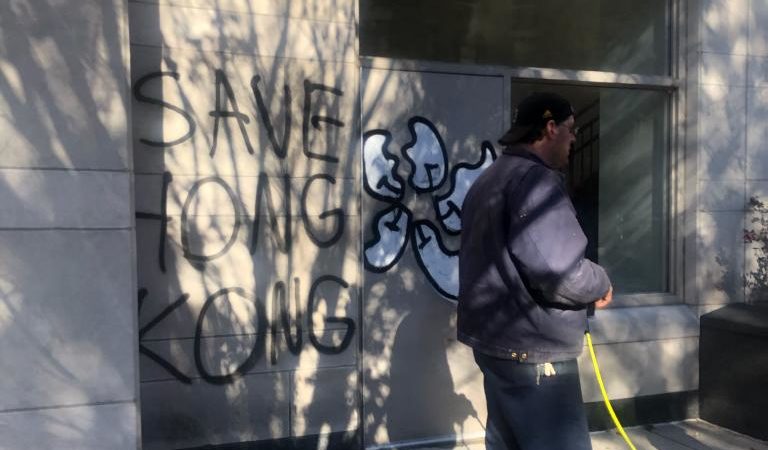Did you see the graffiti around campus recently and wonder what exactly liberate Hong Kong referred to? Or perhaps you saw #StayStrongHongKong around social media and weren’t fully sure about what that meant?
Although it seems as if the problem has only been showcased in the news in the past few months, the root of it actually goes back to 1997, when Hong Kong was no longer ruled by Britain as a colony and officially “given back” to China.
Its relationship with China then had been officially summarized by what it called the “one country, two systems” arrangement. According to Time, this setup essentially states that Hong Kong would have its own judiciary, legal and economic systems, but that it should recognize China’s Communist government as legitimate and ultimately be part of the People’s Republic of China.
These freedoms that Hong Kong was given are set to expire within 50 years, meaning that from 2047 onwards, Hong Kong’s status and relationship with China is hazy.
Although instances of clashes with the Mainland have been ongoing, from the 2014 Umbrella Revolution protests, to the 2017 CUHK Democracy Wall incident, the crux of the Hong Kong-China tensions of this decade manifests itself in the extradition bill implemented in April of this year.
This bill, which stated that criminal suspects from Hong Kong may be extradited to China for treatment, was the initial trigger for the street protests of hundreds of thousands in Hong Kong, according to CNN. Protesters had established what they called “Five demands, not one less!”
These five demands were: for the protests not to be deemed riots, for the arrested protesters to be granted amnesty, for an inquiry into police brutality to be undertaken, for universal suffrage to be implemented along with the resignation of Chief Executive Carrie Lam, and for the extradition bill to be withdrawn—the last of which was achieved in September.
Some of the most notable moments of the protests this year include June 12, when, as Al Jazeera reported, the second reading of the extradition bill took place and Hongkongers assembled outside the Legislative Council Complex in protest. This marked the beginning of the police’s use of force in the controversial form of rubber bullets and tear gas.
Another notable protest was that of July 1, when an annual pro-democracy march was held on Establishment Day, the day that Hong Kong became a special administrative region of China. Its 2019 march was said to have record turnout, and CNBC reported that activists occupied the Legislative Council Complex, vandalized the Hong Kong emblem and took other actions.
July 1 triggered a domino effect of other protests across Hong Kong throughout the month of July.
On Aug. 23, another protest of note took place—a peaceful political campaign, rather. As reported by ChannelNewsAsia, activists made a human chain across Victoria Harbor to emphasize the movement and its protesters’ five demands.
Oct. 1, the 70th founding anniversary of China, marked the police’s first use of bullets and firing of 1,400 canisters of tear gas across Hong Kong in response to mass protests that turned violent, as reported by Hong Kong Free Press. A particular incident of this day was when an 18-year-old in Tsuen Wan attempted to hit a policeman and was shot in the chest in return.
Large parts of the protests came in the form of conflicts within universities in Hong Kong, with protesters in the Chinese University of Hong Kong, from Nov. 13 to 15, confronting the police who shot tear gas and rubber bullets. The NY Times reported that this conflict led to further protests in other universities, such as the Hong Kong Polytechnic University (HKPU).
Protesters made HKPU a site of defense from the police, and the police resultantly used water cannons and tear gas on them, only to be hit back by bricks and gasoline bombs. The police ended up arresting over a thousand people in the protests, many of whom were volunteers and medical professionals.
These protests are by no means over. Even recently, on Dec. 8, hundreds of thousands took part in a march organized by the Civil Human Rights Front to continue pressuring the government and reiterate the five demands of the activists, reported Foreign Policy.
This article alone cannot cover all the events that these 2019 protests consisted of, such as the airport protests, Hong Kong Human Rights and Democracy Act passed by the U.S. House, the election gathering at Victoria Park and numerous other key moments. This simply highlights significant dates in this long and complicated movement that Hong Kong has been carrying out since April, and, in a way, since 1997. As students of a forward thinking and politically active university, it is our responsibility to inform ourselves about global matters and be involved in some way or another in those that matter to us.

